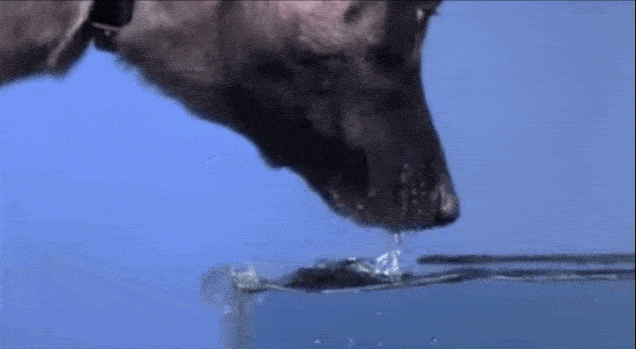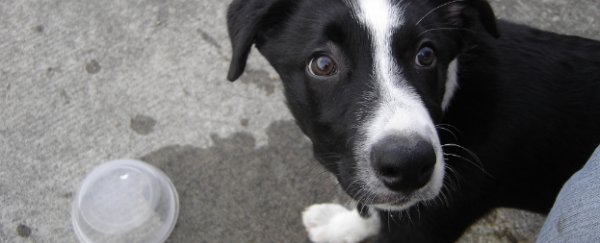
Cats and dogs may look like they drink in similar ways - both lapping adorably at the surface of their desired beverage - but new fluid dynamic research has shown that there's a big difference between the two.
It's also helped explain why dogs are so much messier with the water bowl than cats are, and has shown that the bigger the dog, they sloppier they're likely to be.
Both species are unable to suck in water like humans can, as they have incomplete cheeks - a trait that allows four-legged predators to open their mouths wide and deliver killing blows. Of course that's a great thing when it comes to eating, but in the case of dogs, the new research shows it also leaves them incapable of taking a nice, refreshing drink without spilling it everywhere.
The study, led by Virginia Tech and Purdue University in the US, is a continuation of research done by the same team three years ago on the fluid dynamics involved when cats drink.
Back then the researchers showed that felines get hydrated via an elegant two-part process.
First, cats delicately place their tongues on the surface of a liquid, and then they rapidly pull it back in, creating a column of fluid underneath their tongues that then whooshes into their mouths.
You can see that process in slow motion in the fascinating footage below from The Aww Channel:

But dogs, it turns out, do things very differently.
"When we started this project, we thought that dogs drink similarly to cats," said Sunny Jung, a researcher from Virginia Tech, in a press release. "But it turns out that it's different, because dogs smash their tongues on the water surface - they make lots of splashing - but a cat never does that."
To find out what was going on, they placed cameras under the surface of a water trough and mapped how much surface area of the dog's tongue was hitting the water.
What they observed was that, after dogs smash their tongues down on the water, they then withdraw it extremely fast. So fast, in fact, that the acceleration is roughly five times that of gravity. This creates water columns, which then feed up into their mouths.
As Jennifer Viegas notes for Discovery News, the tip of the canine tongue is also shaped like a ladle, which means the dogs have to open their mouths extra wide to take in the liquid, which just makes them even sloppier (poor guys). The Discovery video below shows the whole messy process in slow-motion:

The scientists also found that heavier dogs slap a larger area of their tongues onto the water when they drink, which suggests that the amount of water a dog can lap up in one gulp increases exponentially relative to their body size.
To find out more about the physics behind the process, the researchers made a model of a dog's tongue and mouth using glass tubes.
The press release explains that this allowed them to mimic the acceleration and column formation during the exit process. The team then measured the volume of water withdrawn.
They discovered that the column of water pinches off and detaches from the bowl of water, primarily due to gravity.
Lucikly, dogs are clever enough to close their mouths and catch the water just before it collapses back to the bowl.
The results were reported yesterday at the American Physical Society's Division of Fluid Dynamics Meeting held in San Francisco, and next Jung and the team are going to investigate the motion of plunging seabirds, hoping frogs and even leaves in the rain.
While the research may sound frivolous, it's helping scientists to better understand fluid dynamics, which are involved in pretty much every other type of science - from medicine to engineering. And it proves what we've long suspected - when it comes to elegance, cats are far superior to dogs. But we love them anyway.
And if you think that dogs are messy with water, wait until you see what this German Shepherd does with his spaghetti. No science is needed to work out the winner in this race.

Source: Discovery News, Phys.Org
